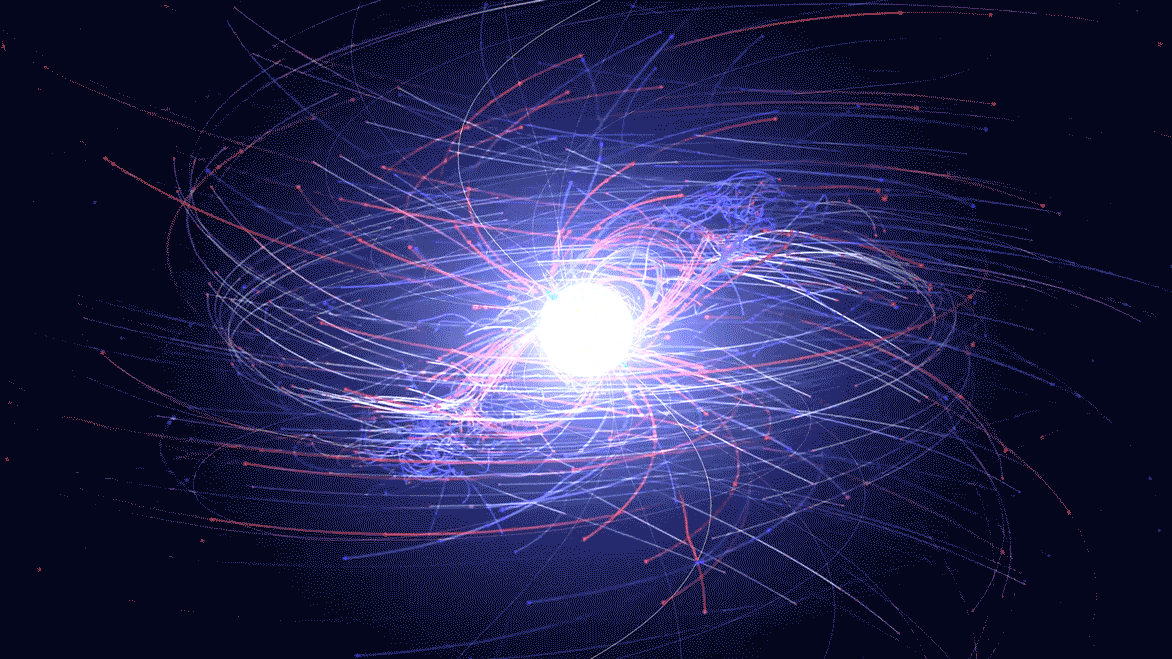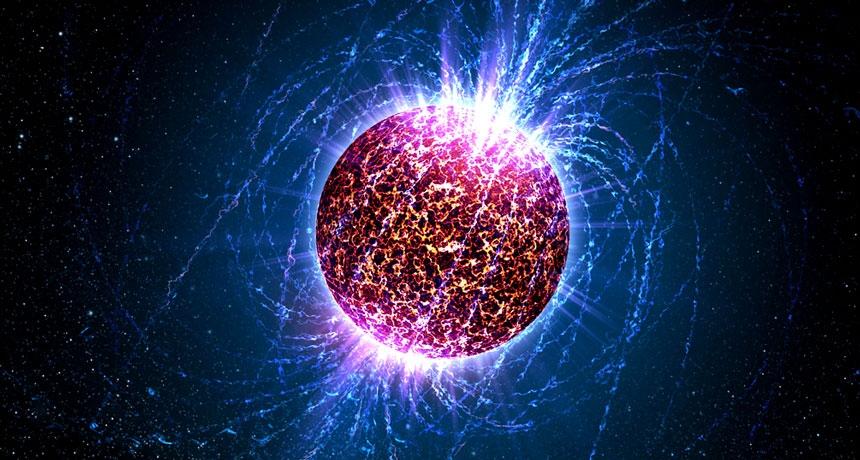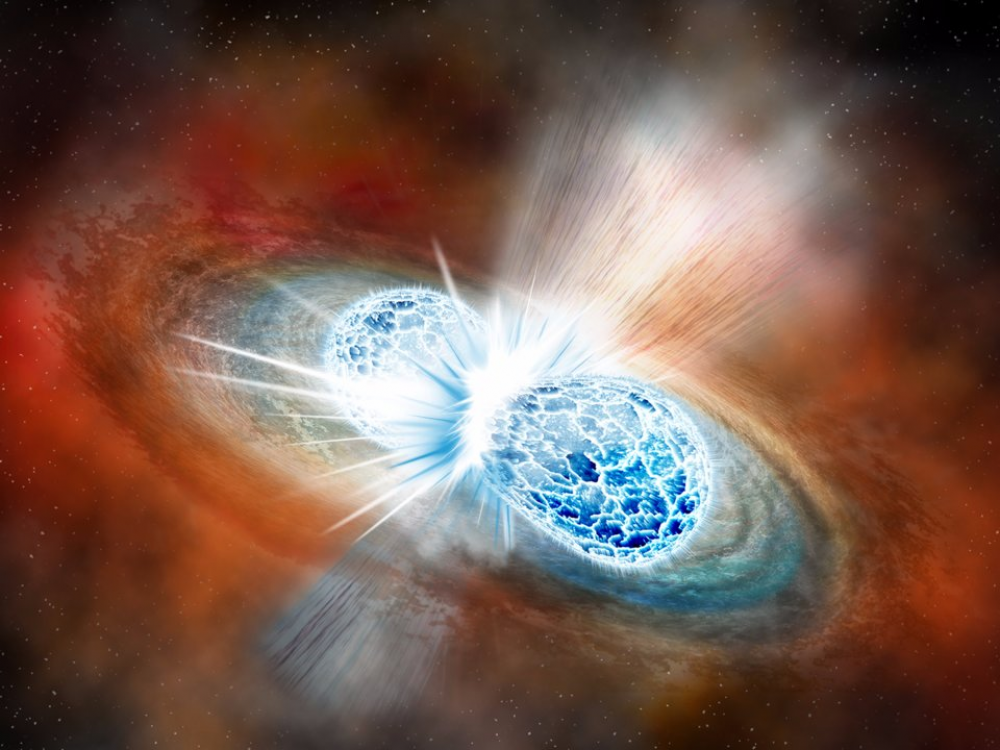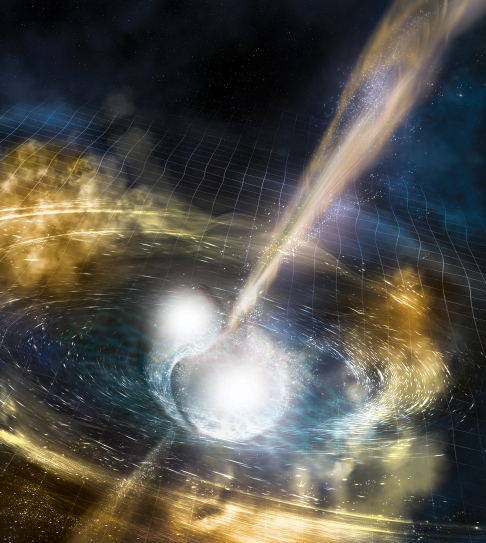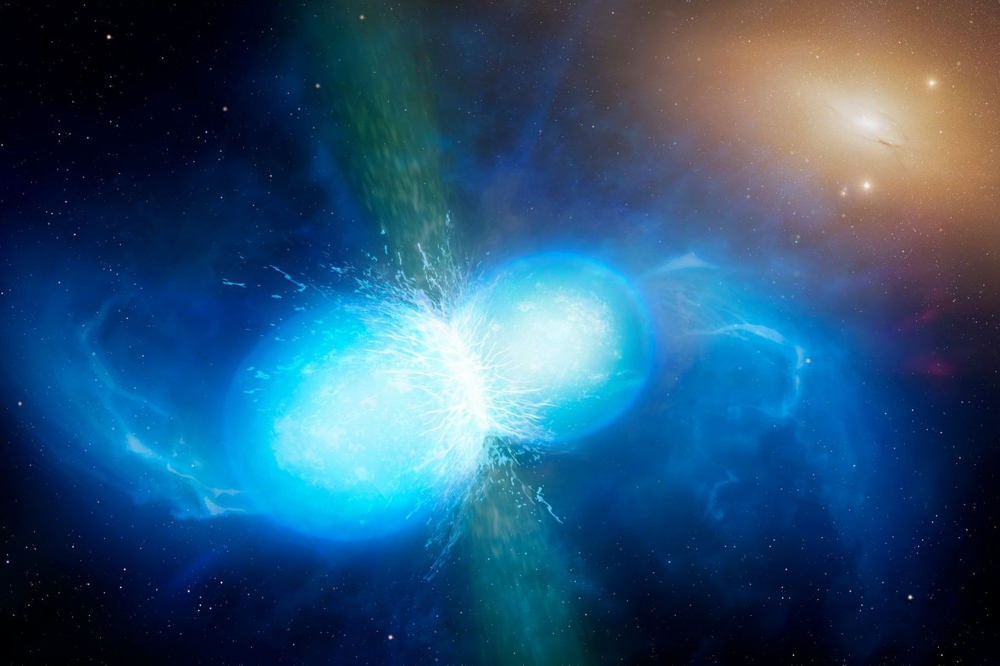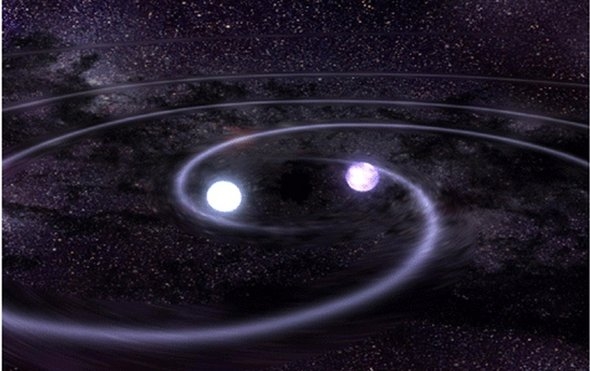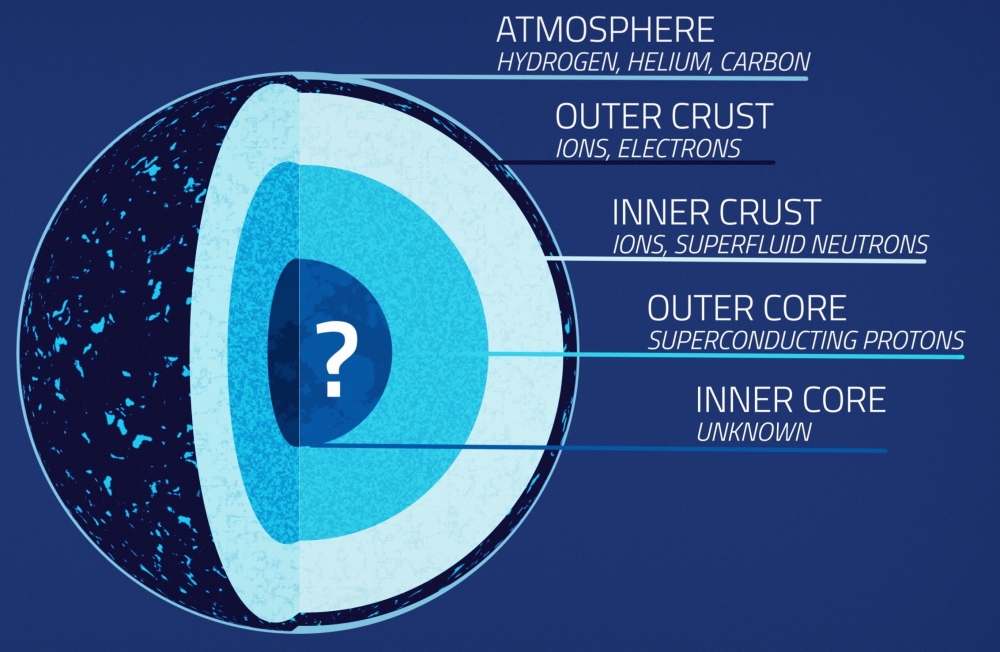
Scientists think neutron stars are layered. As shown in this illustration, the state of matter in their inner cores remains mysterious.
Credits: NASA’s Goddard Space Flight Center/Conceptual Image Lab
Apr 17, 2021
Matter in the hearts of neutron stars – dense remnants of exploded massive stars – takes the most extreme form we can measure. Now, thanks to data from NASA’s Neutron star Interior Composition Explorer (NICER), an X-ray telescope on the International Space Station, scientists have discovered that this mysterious matter is less squeezable than some physicists predicted.
The finding is based on NICER’s observations of PSR J0740+6620 (J0740 for short), the most massive known neutron star, which lies over 3,600 light-years away in the northern constellation Camelopardalis. J0740 is in a binary star system with a white dwarf, the cooling remnant of a Sun-like star, and rotates 346 times per second. Previous observations place the neutron star’s mass at about 2.1 times the Sun’s.
"We're surrounded by normal matter, the stuff of our everyday experience, but there’s much we don’t know about how matter behaves, and how it is transformed, under extreme conditions,” said Zaven Arzoumanian, the NICER science lead at NASA’s Goddard Space Flight Center in Greenbelt, Maryland. “By measuring the sizes and masses of neutron stars with NICER, we are exploring matter on the verge of imploding into a black hole. Once that happens, we can no longer study matter because it’s hidden by the black hole’s event horizon."
Arzoumanian and members of the NICER team presented their findings on Saturday, April 17, at a virtual meeting of the American Physical Society, and papers describing the findings and their implications are now undergoing scientific review.
See full text
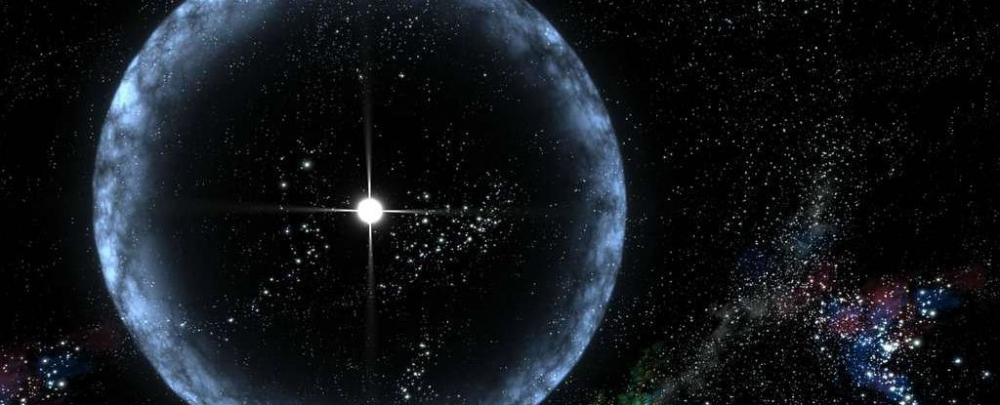
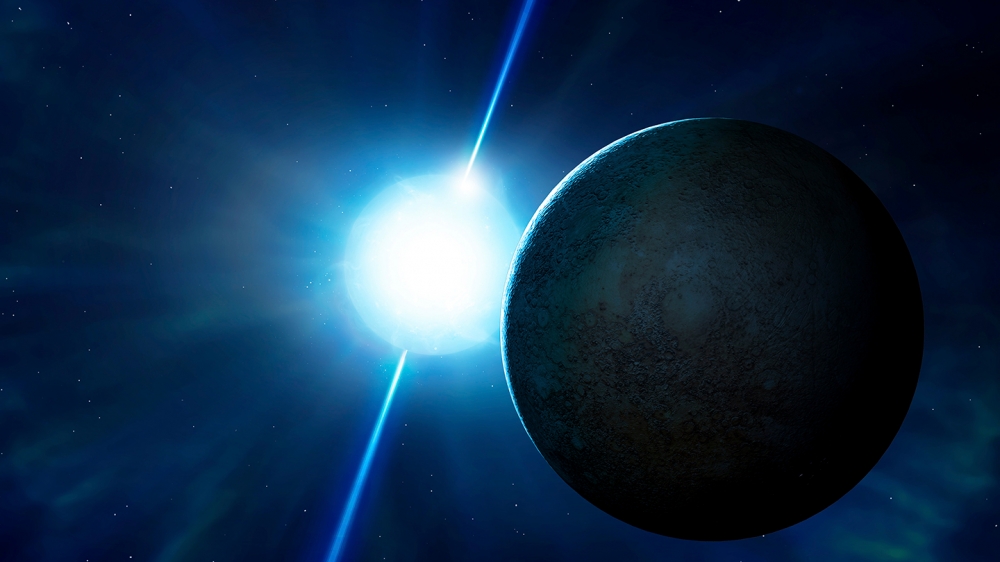
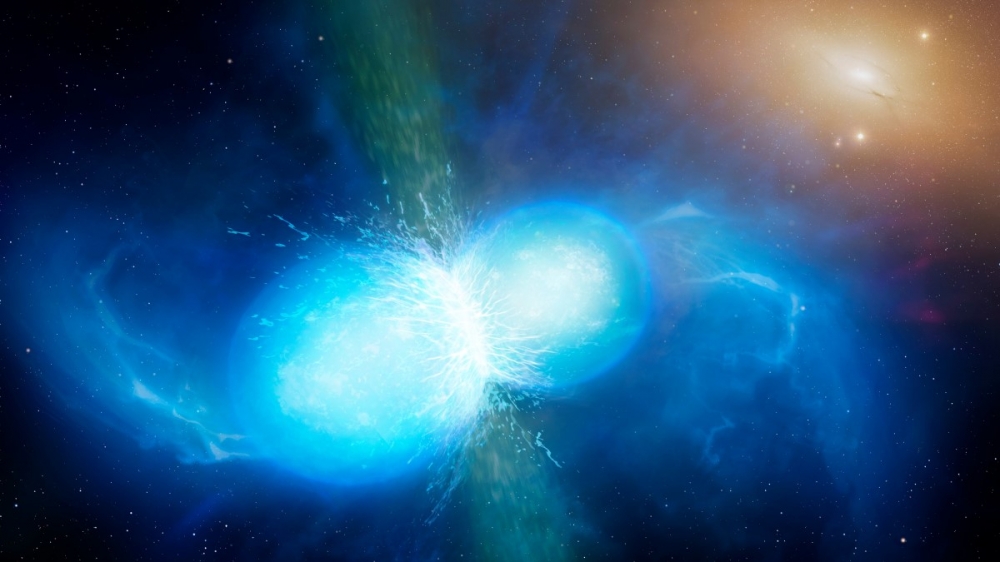
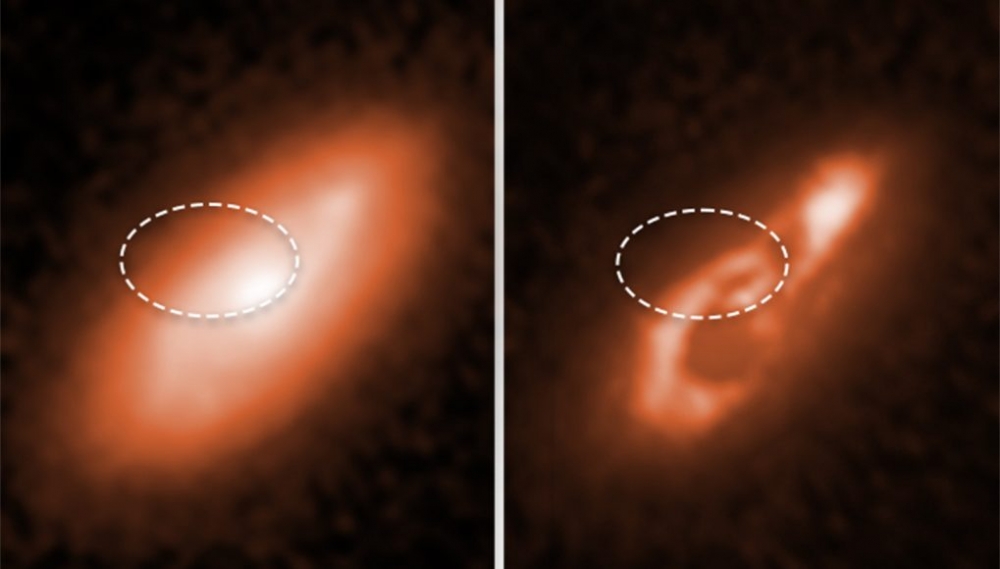
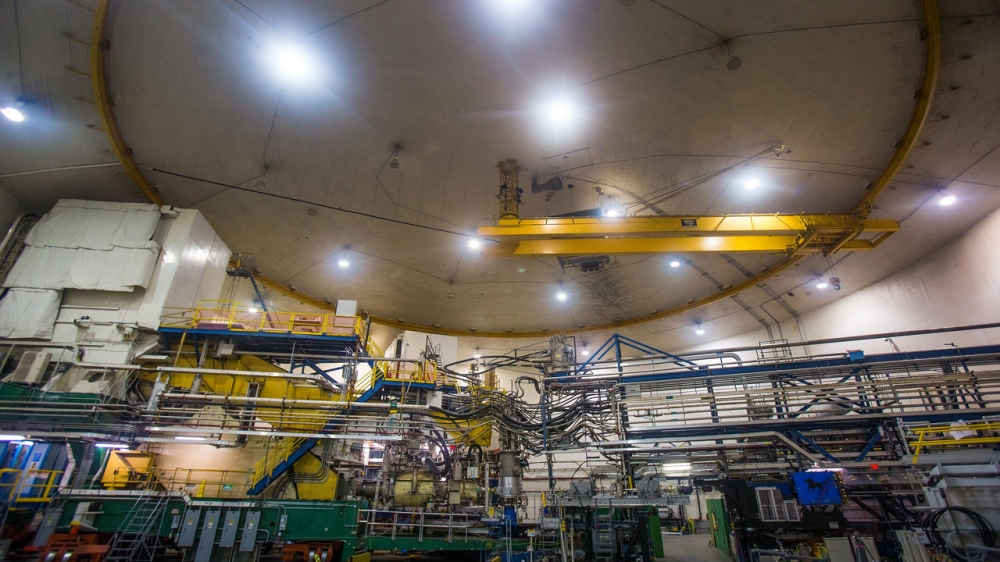

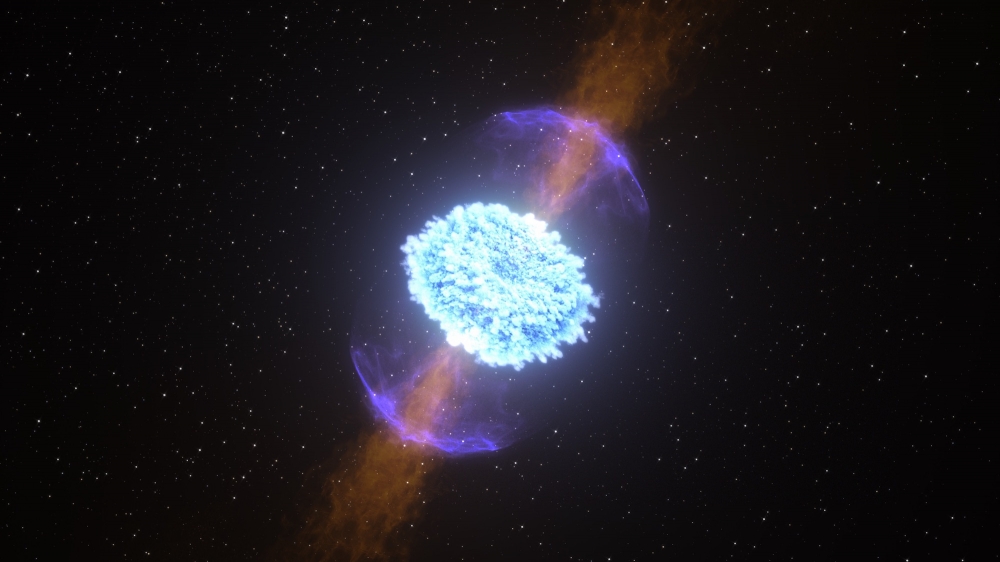
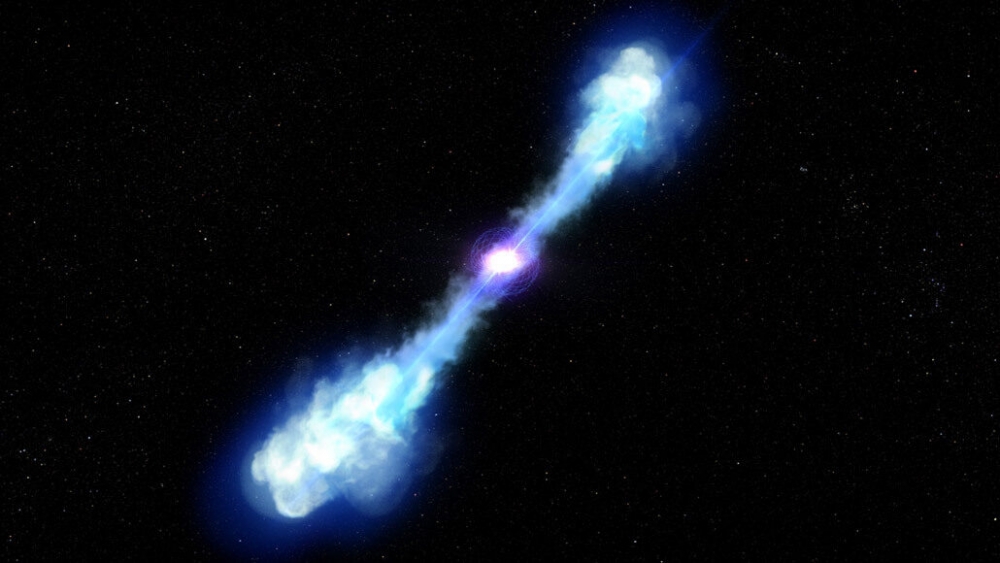
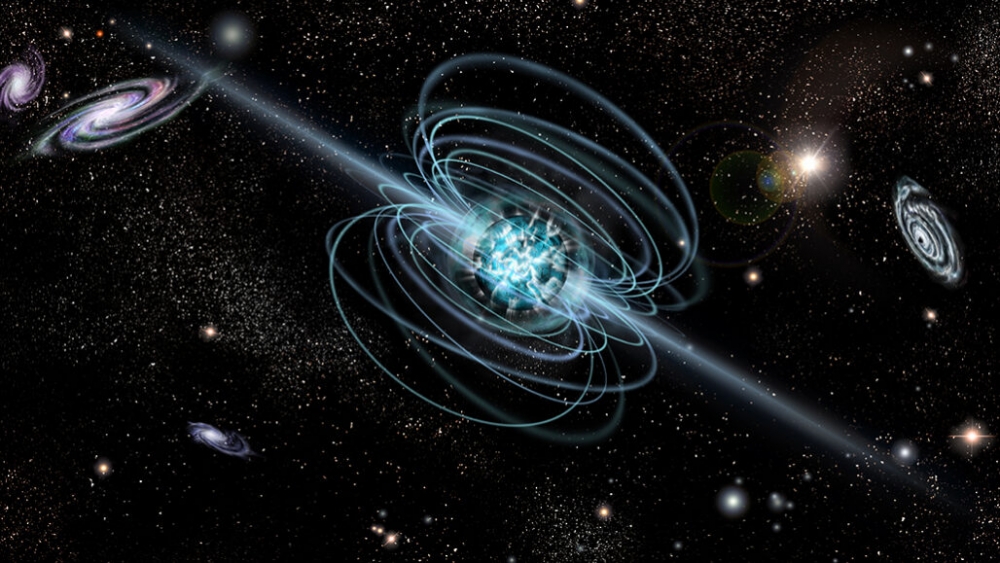 Magnetars, highly magnetized stellar corpses like the one illustrated here, could be the source of two different cosmic enigmas: fast radio bursts and high-energy neutrinos, a new study suggests. DRACO-ZLAT/ISTOCK/GETTY IMAGES PLUS
Magnetars, highly magnetized stellar corpses like the one illustrated here, could be the source of two different cosmic enigmas: fast radio bursts and high-energy neutrinos, a new study suggests. DRACO-ZLAT/ISTOCK/GETTY IMAGES PLUS